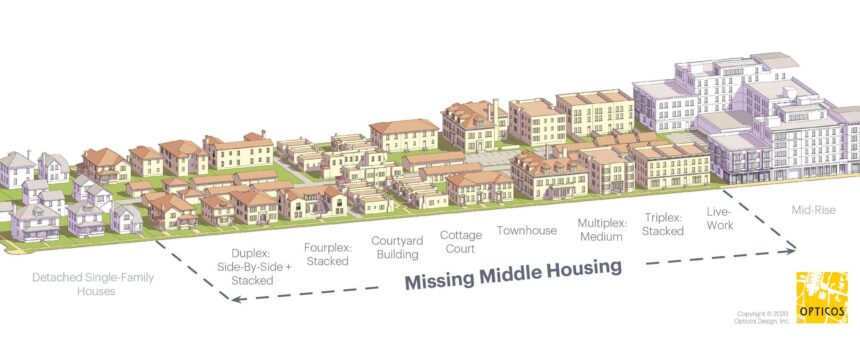In a move that could reshape the landscape of urban development in San Francisco, a new state housing bill is poised to clash with the city’s controversial upzoning efforts. Advocates argue that the legislation aims to alleviate the ongoing housing crisis by facilitating the construction of more affordable units, while opponents raise concerns about local control and the potential for community disruptions. As city officials navigate the complexities of California’s housing demands and local zoning laws, San Francisco finds itself at a critical juncture, where state mandates and city priorities must find common ground-or risk further escalating the housing affordability crisis. This article examines the implications of the state housing bill and its potential impact on the future of upzoning in San Francisco.
State Housing Legislation Poses Challenges to San Francisco’s Upzoning Efforts
The recent state housing legislation has sparked significant debate regarding its implications for San Francisco’s ongoing efforts to upzone and increase housing availability. Local leaders are concerned that the bill may inadvertently complicate matters as it introduces new regulatory frameworks that could slow down development processes. Specifically, the legislation mandates various assessments that developers must fulfill, which could lead to delays and increased costs for housing projects aimed at addressing the city’s chronic housing shortage.
Moreover, the intersection of state mandates and local zoning laws has raised questions about the overall effectiveness of upzoning initiatives. Some key challenges include:
- Compliance Burden: Developers must navigate an expanded landscape of compliance, potentially stalling new projects.
- Community Resistance: Increased scrutiny from local stakeholders who are wary of losing neighborhood character amid rapid development.
- Funding Issues: The new legislation may create financial uncertainties for developers, leading to hesitancy in investment.
| Key Challenge | Description |
|---|---|
| Compliance Burden | New regulatory assessments may hinder timely project approvals. |
| Community Resistance | Local pushback can delay or derail planned developments. |
| Funding Issues | Increased costs may deter investment in new housing projects. |
Impacts on Affordable Housing and Local Communities Under Scrutiny
The ongoing debate surrounding the state housing bill is increasingly focused on its implications for affordable housing and the vitality of local communities. As San Francisco grapples with a housing crisis, this legislation aims to promote higher-density developments through upzoning, which proponents argue will help alleviate housing shortages. However, critics are concerned that such measures could inadvertently exacerbate the existing affordability crisis and lead to the displacement of long-standing residents. The tension between the need for housing and the preservation of community character is at the forefront of discussions surrounding this bill.
Local community stakeholders have raised several points of contention regarding the proposed changes:
- Increased Displacement Risk: Higher-density projects may lead to soaring rents, pushing vulnerable populations further out of the neighborhoods they’ve called home.
- Infrastructure Strain: Rapid development without adequate infrastructure upgrades can result in congestion, overburdened public amenities, and diminished quality of life for current residents.
- Community Identity: Critics highlight that unchecked development could erode the distinct cultural fabric and character of neighborhoods.
| Impact | Proponents’ View | Opponents’ View |
|---|---|---|
| Housing Availability | Increased supply lowers prices | Quality of life may diminish |
| Local Economy | Economic growth through jobs | Potential for local businesses to struggle |
| Community Cohesion | New development fosters community | Risk of displacing established residents |
Policy Recommendations for Harmonizing State and Local Housing Initiatives
As the state seeks to address its housing crisis through sweeping legislative measures, it is crucial for a cohesive approach that aligns state laws with local zoning regulations, particularly in urban centers like San Francisco. To facilitate this harmony, stakeholders must prioritize transparency and collaboration between state and local governments. Enhancing communication channels can lead to shared understanding of housing needs, enabling cities to implement relevant policies that reflect their unique challenges. Key recommendations include:
- Establishing Joint Housing Committees: Forums where state officials and local leaders can regularly convene to discuss planning priorities and share resources.
- Creating a Unified Framework: A standardized guideline for zoning reforms that balances state objectives with local community interests.
- Monitoring and Reporting: Implementing a tracking system to evaluate the impact of state housing legislation on local housing markets.
Moreover, incentives should be offered to local governments that align their policies with state objectives, fostering a cooperative environment. A revision of funding mechanisms to ensure synchrony in financial resources allocation could prove beneficial. For clarity, the following table outlines potential incentive structures for localities:
| Incentive Type | Description |
|---|---|
| Grant Programs | Direct funding for local governments adopting state-aligned housing policies. |
| Tax Credits | Financial incentives for developers who comply with both state and local housing requirements. |
| Technical Support | Access to state resources for local planning departments to streamline upzoning processes. |
Insights and Conclusions
In conclusion, as the proposed state housing bill moves forward, it presents both opportunities and challenges for San Francisco’s housing landscape. While the intent of the legislation is to address the pressing need for more affordable housing, its potential conflict with the city’s upzoning initiatives could complicate efforts to achieve a balanced development strategy. As stakeholders and policymakers navigate these complexities, the outcome will have significant implications not only for San Francisco’s housing market but also for its future urban planning. Continued dialogue and collaboration among local officials, community members, and state representatives will be crucial in finding a path that prioritizes both growth and community needs. The coming months will be pivotal as debates ensue and decisions are made, shaping the city’s housing policies for years to come.









